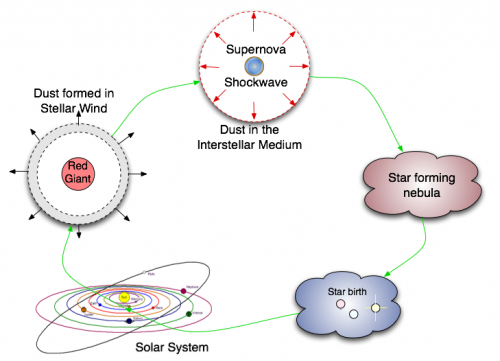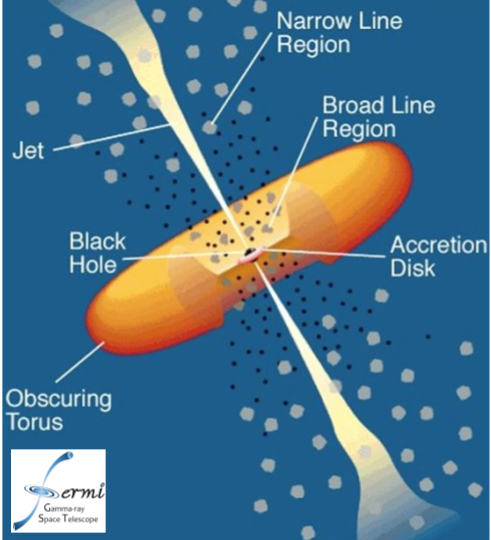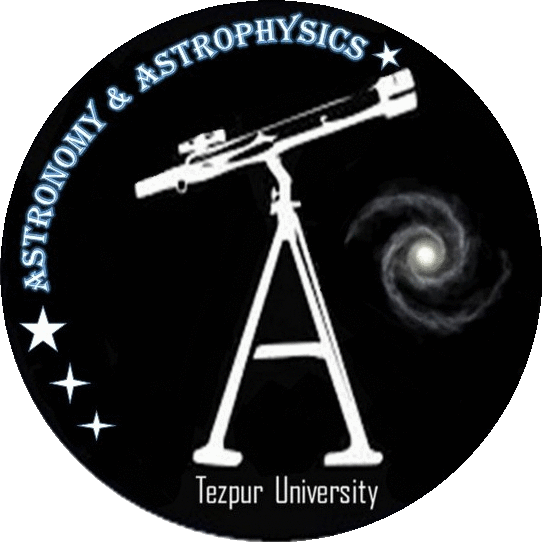Areas of Research
- Cosmic Dust:

Fig. 1 : Life cycle of Cosmic Dust. The Universe is a very dusty place. Cosmic dust consists of tiny particles of solid material floating around in the space between the stars. It is not the same as the dust we find in our house but more like smoke with small particles varying from collections of just a few molecules to grains of 0.1 mm in size. Dust is important because we find lots of it around young stars. In fact it helps them to form, and it is also the raw material from which planets like the Earth are formed. Source:Hershel Space Observatory
- Active Galactic Nuclei (AGNs):

Fig. 2 : Active Galactic Nuclei. A compact core at the centre of a galaxy with luminosity > 10^44 ergs s^-1 is known as active galactic nuclei (AGN). Unified models of AGN suggest that different types of AGN are really defined by how we see them. When such jets are pointed at Earth, we see what is called a Blazar.
- Galaxies:

Fig. 3 : Types of Galaxies. A galaxy is a massive, gravitationally bound system that consists of stars, stellar objects (such as brown dwarfs and neutron stars), nebulae, an interstellar medium of gas and dust, black holes, and an unknown component of dark matter. Examples of galaxies range from dwarfs with as few as ten million stars to giants with a hundred trillion stars or more, each orbiting through their galaxy. Galaxies are classified into three main types: spiral galaxies, elliptical galaxies, and irregular galaxies. There are probably more than 170 billion galaxies in the observable universe. Source:Space Facts
 TUAA
TUAA